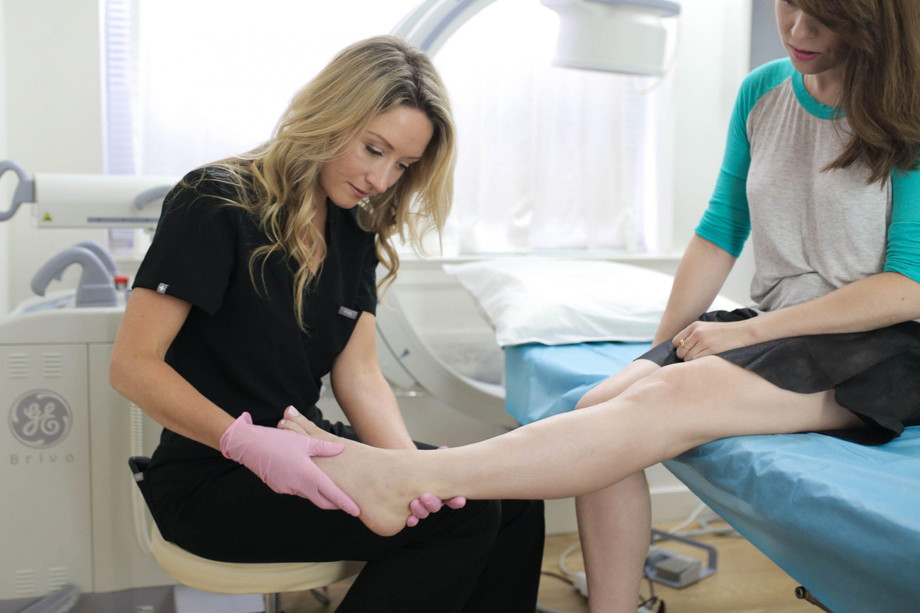What is The Primary Objective of Treating Varicose Veins?
Varicose veins, often a source of discomfort and concern, are swollen and twisted veins that can affect the legs and sometimes other parts of the body. They are a common vascular condition that affects a significant portion of the population, particularly as individuals age. The primary objective of treating varicose veins is to alleviate symptoms, improve the appearance of affected veins, and prevent potential complications. In this comprehensive guide, we'll explore the treatment options for varicose veins and answer the question: What is a Vein Doctor Called?
The Primary Objective of Treating Varicose Veins:
Varicose veins can be more than just a cosmetic issue; they can lead to various symptoms and complications if left untreated. The primary objectives of treating varicose veins are:

- Symptom Relief: The most common symptoms associated with varicose veins include pain, swelling, itching, and a feeling of heaviness in the affected limbs. Treating varicose veins aims to alleviate these symptoms and enhance the patient's overall quality of life.
- Improving Aesthetic Concerns: Varicose veins can be a source of self-consciousness and affect a person's self-esteem. Treating varicose veins can improve the appearance of the affected veins and restore confidence.
- Preventing Complications: Varicose veins can lead to more severe issues if left unaddressed. Complications may include skin ulcers, blood clots, and bleeding. Treating varicose veins is essential to prevent these complications from occurring.
- Enhancing Blood Flow: By addressing varicose veins, blood circulation in the affected area can be improved, reducing the risk of blood clots and other vascular problems.
What are the Treatment Options for Varicose Veins?
Several treatment options are available for varicose veins, ranging from conservative measures to more invasive procedures. The choice of treatment depends on the severity of the condition and the patient's preferences. Here are some common treatment options:
Lifestyle Modifications:
Mild cases of varicose veins can often be managed with lifestyle changes. These may include:
- Regular exercise to improve circulation.
- Weight management to reduce excess pressure on veins.
- Elevating the legs when resting.
- Avoiding prolonged periods of standing or sitting.
- Wearing compression stockings to support blood flow.
Sclerotherapy:
Sclerotherapy is a minimally invasive procedure that involves injecting a solution directly into the affected veins. This causes the veins to collapse and eventually be absorbed by the body. Sclerotherapy is typically used for smaller varicose veins and spider veins.
Endovenous Laser Treatment (EVLT):
EVLT, also known as laser ablation, is a procedure that uses laser energy to close off varicose veins. A tiny laser fiber is inserted into the vein, and the laser's heat seals the vein shut. This minimally invasive method is suitable for larger varicose veins.
Radiofrequency Ablation (RFA):
RFA is another minimally invasive procedure that uses radiofrequency energy to heat and close varicose veins. Like EVLT, RFA is effective for larger veins and is performed as an outpatient procedure.
Venous Stripping and Ligation:
For more severe cases, surgical options like vein stripping and ligation may be considered. During these procedures, the surgeon removes the affected vein or ties it off to prevent further blood flow. While this was once a common approach, it is now typically reserved for complicated cases.
Ambulatory Phlebectomy:
Ambulatory phlebectomy is a surgical technique that involves making small incisions near the varicose veins and removing them in sections. It is often used in combination with other treatments for larger veins.

Endoscopic Vein Surgery:
Endoscopic vein surgery is a rare procedure used for severe cases with ulcers. An endoscope is inserted into the vein to close it off. This procedure is reserved for specific situations and is considered more invasive.
What is a Vein Doctor Called?
A medical specialist who diagnoses and treats vein-related conditions, including varicose veins, is commonly referred to as a Phlebologist. Phlebologists are physicians who have specialized training in vascular diseases and are experts in the diagnosis and treatment of vein disorders. They use a variety of non-invasive, minimally invasive, and surgical techniques to address vein issues and ensure optimal outcomes for patients.
Conclusion:
The primary objective of treating varicose veins is to alleviate symptoms, improve the appearance of affected veins, and prevent complications. Various treatment options are available, ranging from conservative measures to minimally invasive and surgical procedures. The choice of treatment depends on the severity of the condition and the patient's preferences. When seeking treatment for varicose veins, it's essential to consult a qualified Phlebologist who can provide expert guidance and care. By addressing varicose veins promptly and effectively, individuals can experience relief from discomfort, regain confidence in their appearance, and reduce the risk of complications.
Comments
Post a Comment